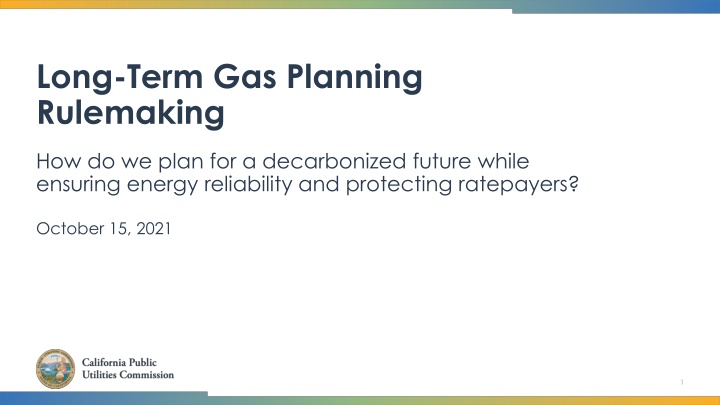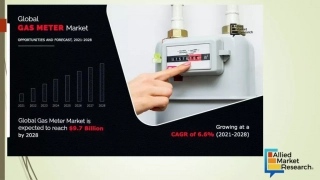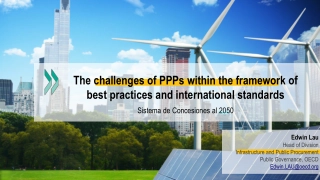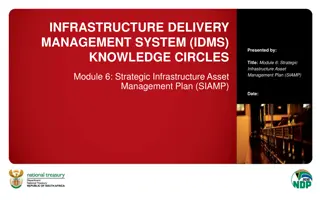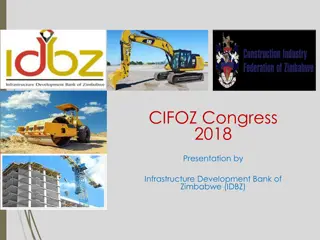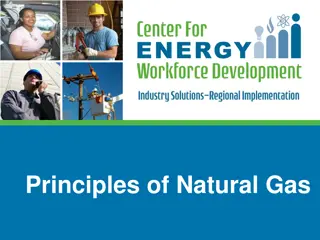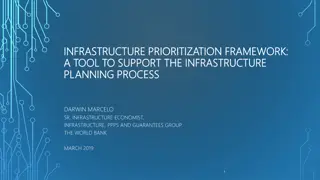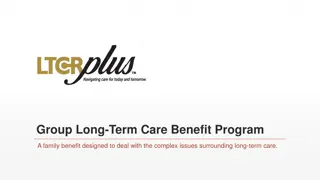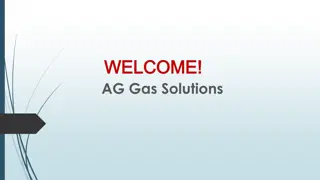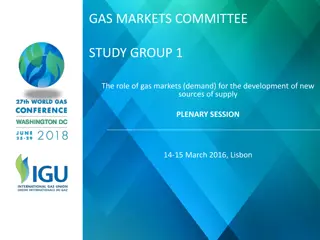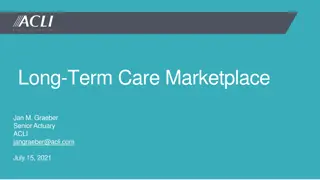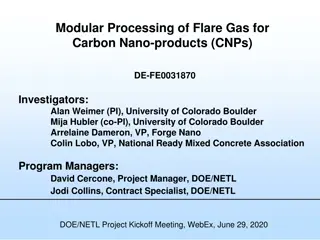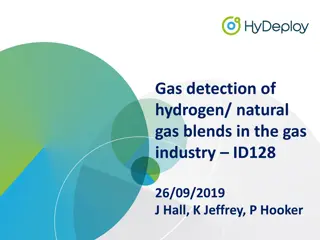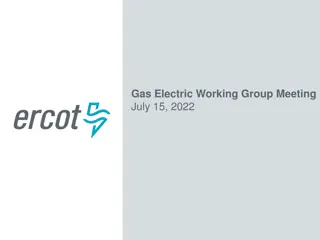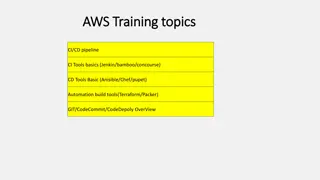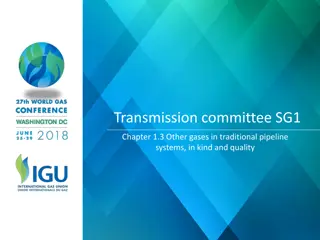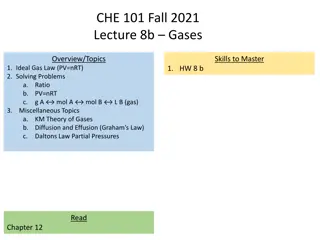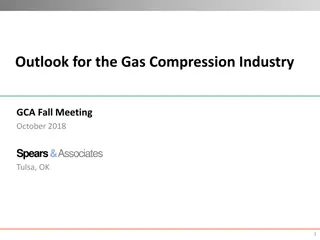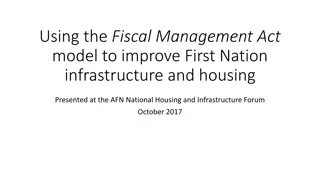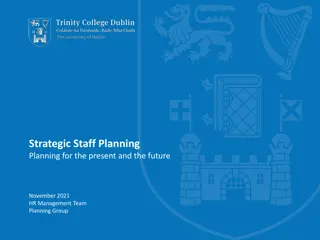Long-Term Gas Infrastructure Planning
Decarbonizing the future gas infrastructure while ensuring energy reliability and protecting ratepayers is a critical aspect of long-term planning. The California Public Utilities Commission is actively engaged in the rulemaking process to address key issues such as gas infrastructure safety, data processes, revenue, rate design, workforce concerns, and more. Stakeholders can provide input on the scoping memo, with opening comments due by November 2 and reply comments by November 12. Workshops will be conducted to discuss criteria for pipeline maintenance, decommissioning priorities, non-pipeline alternatives, and infrastructure needs. Stay updated on the progress towards a decarbonized and reliable energy future.
Download Presentation

Please find below an Image/Link to download the presentation.
The content on the website is provided AS IS for your information and personal use only. It may not be sold, licensed, or shared on other websites without obtaining consent from the author.If you encounter any issues during the download, it is possible that the publisher has removed the file from their server.
You are allowed to download the files provided on this website for personal or commercial use, subject to the condition that they are used lawfully. All files are the property of their respective owners.
The content on the website is provided AS IS for your information and personal use only. It may not be sold, licensed, or shared on other websites without obtaining consent from the author.
E N D
Presentation Transcript
Long-Term Gas Planning Rulemaking How do we plan for a decarbonized future while ensuring energy reliability and protecting ratepayers? October 15, 2021 California Public Utilities Commission 1
Outline R.20-01-007 Proceeding Overview Track 2 Key Scoping Memo Issues Environmental Justice Stakeholder Outreach Questions California Public Utilities Commission 2
Long-Term Gas Planning Rulemaking 2 1B 1A Long-Term Natural Gas Policy and Planning Market Structure and Regulations System Reliability Standards Ensure safe, reliable, and affordable energy in a time of declining fossil gas throughput Mitigate the risk that gas supply shortages pose to gas and electric reliability and prices Establish minimum system requirements and ensure gas utilities consistently meet those standards and provide reliable gas service California Public Utilities Commission 3
Track 2 The Scoping Memo was issued on October 14 and includes questions related to the following issues: Gas Infrastructure Safety Data Process Gas Revenues and Rate Design Workforce Issues Parties to the proceeding may comment on the Scoping Memo and suggest changes. Opening Comments are due November 2. Reply Comments are due November 12. California Public Utilities Commission 4
Gas Infrastructure How should the CPUC determine the appropriate gas infrastructure portfolio for a decarbonizing future? Transmission pipelines are similar to highways: Carry large amounts of gas long distances at high pressure Decommissioning impacts a large region Distribution pipelines are similar to city streets Carry smaller amounts of gas shorter distances at lower pressure Decommissioning impacts a local area California Public Utilities Commission 5
Gas Infrastructure Key issues: 1. Criteria for when aging pipelines should be repaired, replaced, or taken offline. 2. Priority for decommissioning distribution lines: 1. Community characteristics 2. Cost savings 3. Pipeline safety 3. Consideration of non-pipeline alternatives. 4. Infrastructure needs of customers who are likely to remain on the gas system the longest. Workshops on these issues will be held on January 10 and 24, 2022. A decision is expected in September 2022. California Public Utilities Commission 6
Safety Gas utilities must comply with state and national regulations. Key issues: Should the Commission prioritize decommissioning infrastructure with costly safety requirements? What should the process be for de-rating a transmission pipeline to a distribution pipeline? A workshop on Safety, Data, and Process issues will be held in October 2022. A decision on Track 2.2 is expected in mid-2023. California Public Utilities Commission 7
Data and Process Consideration of changes to utility gas demand forecasting such as: The type of data needed from utilities to assist decisionmakers and stakeholders in long-term gas system planning. Should the gas utilities be required to submit a decarbonization plan with a 10-year outlook on a regular schedule? Should policy decisions made in this proceeding be reevaluated over an established time interval or in the face of changing conditions? California Public Utilities Commission 8
Cost Allocation and Rate Design Mitigation of affordability issues: Should gas rate design and cost allocation methods be changed due to declining fossil gas throughput? Consideration of new financial tools to balance costs between current and future ratepayers. Cost Allocation, Rate Design, and Workforce issues will be addressed in Track 2.3, likely in 2023. California Public Utilities Commission 9
Workforce Issues Consideration of potential negative impacts on gas industry workers from the transition away from gas. Types of retraining that should be made available to gas utility employees to provide high road employment. Ensuring that gas workers in disadvantaged or low-income communities have equitable access to retraining. California Public Utilities Commission 10
Proposed Engagement Plan Compile Stakeholder List Initial ESJ Group Meeting Hold Community Meetings Post-Engagement Evaluation Early Intervenor Discussions Incorporate Public Input in Record Finalize Public Engagement Strategy Early Engagement Formal Public Engagement California Public Utilities Commission 11
Where We Are Now Compile Stakeholder List Initial ESJ Group Meeting Hold Community Meetings Post-Engagement Evaluation Early Intervenor Discussions Incorporate Public Input in Record Finalize Public Engagement Strategy California Public Utilities Commission 12
Stakeholder List Early Intervenor Discussions Over 70 organizations are expected to have an interest in the proceeding based on organizational goals, population or region represented, and/or interest in natural gas and related proceedings. Includes statewide and regional ESJ organizations, past intervenors, thought leaders, environmental groups, and local governments. Early discussions with intervenors and others with knowledge of the ESJ community in order to scope engagement strategy. California Public Utilities Commission 13
Initial ESJ Group Meeting Discussion with statewide and regional ESJ groups. Aim is to identify those interested in the proceeding and the best means to assist them and incorporate their views. Intend to also get their views on community meetings and public engagement strategy for formal public engagement. California Public Utilities Commission 14
Proposed Engagement Plan Compile Stakeholder List Initial ESJ Group Meeting Hold Community Meetings Post-Engagement Evaluation Early Intervenor Discussions Incorporate Public Input in Record Finalize Public Engagement Strategy Early Engagement Formal Public Engagement California Public Utilities Commission 15
Questions? California Public Utilities Commission 16
Appendix Slide California Public Utilities Commission 17
Background: Storage Storage is like a bank account Intraday demand ~ checking Pipelines deliver the same amount of gas every hour; storage helps meet changes in intraday demand Seasonal demand ~ savings Allows gas to be bought in the spring and fall when it is cheaper and used in the summer and winter when it is more expensive Emergency fund Provides gas when supply is disrupted. Examples: Winter Storm Uri El Paso interstate pipeline outage California Public Utilities Commission 18
